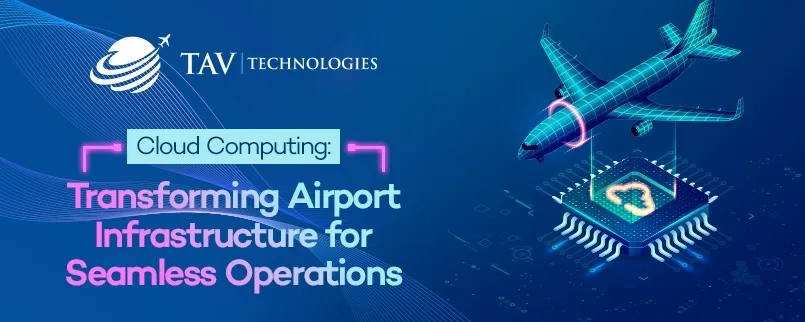
Apr 2024
In the world of aviation, where it's super important to be efficient, safe, and keep everything running smoothly, using the latest technology is really crucial. One of the big game-changers in this field is cloud computing. It's like this powerful tool that's changing how airports work and bringing in lots of new ideas. With sustainability becoming increasingly crucial, cloud computing not only enhances operational efficiency but also reduces carbon emissions, contributing to a greener aviation industry.
What is Cloud Computing?
Before diving into how cloud computing is revolutionizing airport infrastructure, let's understand what it actually is. Think of the cloud as a virtual space where you can store and access data and programs over the internet, rather than on your own computer's hard drive. It's like renting storage and processing power from a giant network of computers instead of relying solely on your own device. Cloud computing allows users to access resources and applications on-demand from anywhere with an internet connection, making it incredibly flexible and scalable. Now, let's explore how this technology is reshaping the way airports operate.
with millions of people passing through every day. Handling all the information they generate, like flight schedules, passenger details, baggage and security stuff, is a huge challenge. Cloud computing helps a lot here. It's like a powerful tool that can store and process lots of data without any problems. With cloud systems, airports can organize their data better, access important info instantly, and save money on infrastructure. By reducing the need for physical hardware and energy consumption, cloud computing also aligns with sustainability goals, promoting eco-friendly practices within airport operations.
Enhanced Passenger Experience
For modern travelers, the airport experience extends beyond mere transportation; it encompasses convenience, connectivity, and personalized services. Cloud computing enables airports to deliver an enhanced passenger experience through seamless integration of services. From self-service kiosks for check-in and baggage drop to mobile applications for real-time flight updates, cloud-based solutions empower airports to cater to the evolving needs of passengers, enhancing satisfaction and loyalty.
Optimized Operations and Maintenance
Maintaining the operational efficiency of airport infrastructure is a perpetual challenge. Cloud computing offers a pathway to optimize operations and maintenance processes, driving cost savings and minimizing downtime. By deploying IoT sensors and AI-powered analytics on cloud platforms, airports can monitor equipment performance, predict maintenance needs, and preemptively address issues before they escalate. This predictive maintenance approach not only enhances operational reliability but also extends the lifespan of critical assets, ensuring long-term sustainability. This predictive maintenance approach not only enhances operational reliability but also supports sustainability goals by reducing resource waste and promoting efficient resource utilization.
Scalability and Flexibility
The dynamic nature of the aviation industry demands agility and flexibility in infrastructure management. Cloud computing provides airports with the scalability and flexibility needed to adapt to fluctuating demands seamlessly. Whether it's accommodating sudden spikes in passenger traffic during peak seasons or scaling resources to support new initiatives, cloud-based solutions offer unparalleled agility. By leveraging cloud infrastructure, airports can swiftly deploy and integrate new technologies, staying ahead of the curve in an ever-evolving landscape.
Data-driven Decision Making
In an era defined by data-driven insights, the ability to harness actionable intelligence is a game-changer for airport operators. Cloud computing serves as the backbone for data analytics initiatives, enabling airports to derive valuable insights from diverse data sources. From optimizing flight schedules and gate assignments to improving security protocols and resource allocation, data-driven decision-making powered by cloud computing enhances operational efficiency and drives continuous improvement across all facets of airport management.
Cloud Computing Era
In conclusion, as TAV Technologies, we believe the adoption of cloud computing in airport infrastructure heralds a new era of innovand efficiency in the aviation industry. Our products are compatible with cloud computing. By providing scalable storage, enhanced passenger experiences, optimized operations, and data-driven decision-making capabilities, cloud-based solutions empower airports to meet the demands of modern air travel effectively. Together, we can navigate the skies with confidence, leveraging the transformative power of cloud computing to propel the aviation industry to new heights of excellence.
